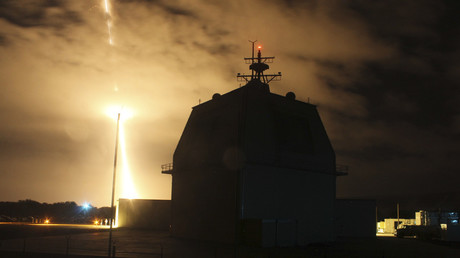FCC cracks the whip on 5G deployment against protests of local governments
The FCC is pushing for speedy deployment of 5G networks nationwide with an order adopted today that streamlines what it perceives as a patchwork of obstacles, needless costs and contradictory regulations at the state level. But local governments say the federal agency is taking things too far.
5G networks will consist of thousands of wireless installations, smaller and more numerous than cell towers. This means that wireless companies can’t use existing facilities, for all of it at least, and will have to apply for access to lots of new buildings, utility poles and so on. It’s a lot of red tape, which of course impedes deployment.
To address this, the agency this morning voted 3 to 1 along party lines to adopt the order (PDF) entitled “Accelerating Wireline Broadband Deployment by Removing Barriers to Infrastructure Investment.” What it essentially does is exert FCC authority over state wireless regulators and subject them to a set of new rules superseding their own.
First the order aims to literally speed up deployment by standardizing new, shorter “shot clocks” for local governments to respond to applications. They’ll have 90 days for new locations and 60 days for existing ones — consistent with many existing municipal time frames but now to be enforced as a wider standard. This could be good, as the longer time limits were designed for consideration of larger, more expensive equipment.
On the other hand, some cities argue, it’s just not enough time — especially considering the increased volume they’ll be expected to process.
Cathy Murillo, mayor of Santa Barbara, writes in a submitted comment:
The proposed ‘shot clocks’ would unfairly and unreasonably reduce the time needed for proper application review in regard to safety, aesthetics, and other considerations. By cutting short the necessary review period, the proposals effectively shift oversight authority from the community and our elected officials to for-profit corporations for wireless equipment installations that can have significant health, safety, and aesthetic impacts when those companies have little, if any, interest to respect these concerns.
Next, and even less popular, is the FCC’s take on fees for applications and right-of-way paperwork. These fees currently vary widely, because as you might guess it is far more complicated and expensive — often by an order of magnitude or more — to approve and process an application for (not to mention install and maintain) an antenna on 5th Avenue in Manhattan than it is in outer Queens. These are, to a certain extent anyway, natural cost differences.
The order limits these fees to “a reasonable approximation of their costs for processing,” which the FCC estimated at about $500 for one application for up to five installations or facilities, $100 for additional facilities, and $270 per facility per year, all-inclusive.
For some places, to be sure, that may be perfectly reasonable. But as Catherine Pugh, mayor of Baltimore, put it in a letter (PDF) to the FCC protesting the proposed rules, it sure isn’t for her city:
An annual fee of $270 per attachment, as established in the above document, is unconscionable when the facility may yield profits, in some cases, many times that much in a given month. The public has invested and installed these assets [i.e. utility poles and other public infrastructure], not the industry. The industry does not own these assets; the public does. Under these circumstances, it is entirely reasonable that the public should be able to charge what it believes to be a fair price.
There’s no doubt that excessive fees can curtail deployment and it would be praiseworthy of the FCC to tackle that. But the governments they are hemming in don’t seem to appreciate being told what is reasonable and what isn’t.
“It comes down to this: three unelected officials on this dais are telling state and local leaders all across the country what they can and cannot do in their own backyards,” said FCC Commissioner Jessica Rosenworcel in a statement presented at the vote. “This is extraordinary federal overreach.”
New York City’s commissioner of information technology told Bloomberg that his office is “shocked” by the order, calling it “an unnecessary and unauthorized gift to the telecommunications industry and its lobbyists.”
The new rules may undermine deployment deals that already exist or are under development. After all, if you were a wireless company, would you still commit to paying $2,000 per facility when the feds just gave you a coupon for 80 percent off? And if you were a city looking at a budget shortfall of millions because of this, wouldn’t you look for a way around it?
Chairman Ajit Pai argued in a statement that “When you raise the cost of deploying wireless infrastructure, it is those who live in areas where the investment case is the most marginal—rural areas or lower-income urban areas—who are most at risk of losing out.”
But the basic market economics of this don’t seem to work out. Big cities cost more and are more profitable; rural areas cost less and are less profitable. Under the new rules, big cities and rural areas will cost the same, but the former will be even more profitable. Where would you focus your investments?
The FCC also unwisely attempts to take on the aesthetic considerations of installations. Cities have their own requirements for wireless infrastructure, such as how it’s painted, where it can be located and what size it can be when in this or that location. But the FCC seems (as it does so often these days) to want to accommodate the needs of wireless providers rather than the public.
Wireless companies complain that the rules are overly restrictive or subjective, and differ too greatly from one place to another. Municipalities contend that the restrictions are justified and, at any rate, their prerogative to design and enforce.
“Given these differing perspectives and the significant impact of aesthetic requirements on the ability to deploy infrastructure and provide service, we provide guidance on whether and in what circumstances aesthetic requirements violate the [Communications] Act,” the FCC’s order reads. In other words, wireless industry gripes about having to paint their antennas or not hang giant microwave arrays in parks are being federally codified.
“We conclude that aesthetics requirements are not preempted if they are (1) reasonable, (2) no more burdensome than those applied to other types of infrastructure deployments, and (3) published in advance,” the order continues. Does that sound kind of vague to you? Whether a city’s aesthetic requirement is “reasonable” is hardly the jurisdiction of a communications regulator.
For instance, Hudson, Ohio city manager Jane Howington writes in a comment on the order that the city has 40-foot limits on pole heights, to which the industry has already agreed, but which would be increased to 50 under the revisions proposed in the rule. Why should a federal authority be involved in something so clearly under local jurisdiction and expertise?
This isn’t just an annoyance. As with the net neutrality ruling, legal threats from states can present serious delays and costs.
“Every major state and municipal organization has expressed concern about how Washington is seeking to assert national control over local infrastructure choices and stripping local elected officials and the citizens they represent of a voice in the process,” said Rosenworcel. “I do not believe the law permits Washington to run roughshod over state and local authority like this and I worry the litigation that follows will only slow our 5G future.”
She also points out that the predicted cost savings of $2 billion — by telecoms, not the public — may be theorized to spur further wireless deployment, but there is no requirement for companies to use it for that, and in fact no company has said it will.
In other words, there’s every reason to believe that this order will sow discord among state and federal regulators, letting wireless companies save money and sticking cities with the bill. There’s certainly a need to harmonize regulations and incentivize wireless investment (especially outside city centers), but this doesn’t appear to be the way to go about it.
Read more
September 26, 2018 at 10:27AM
from TechCrunch
via IFTTT





No comments